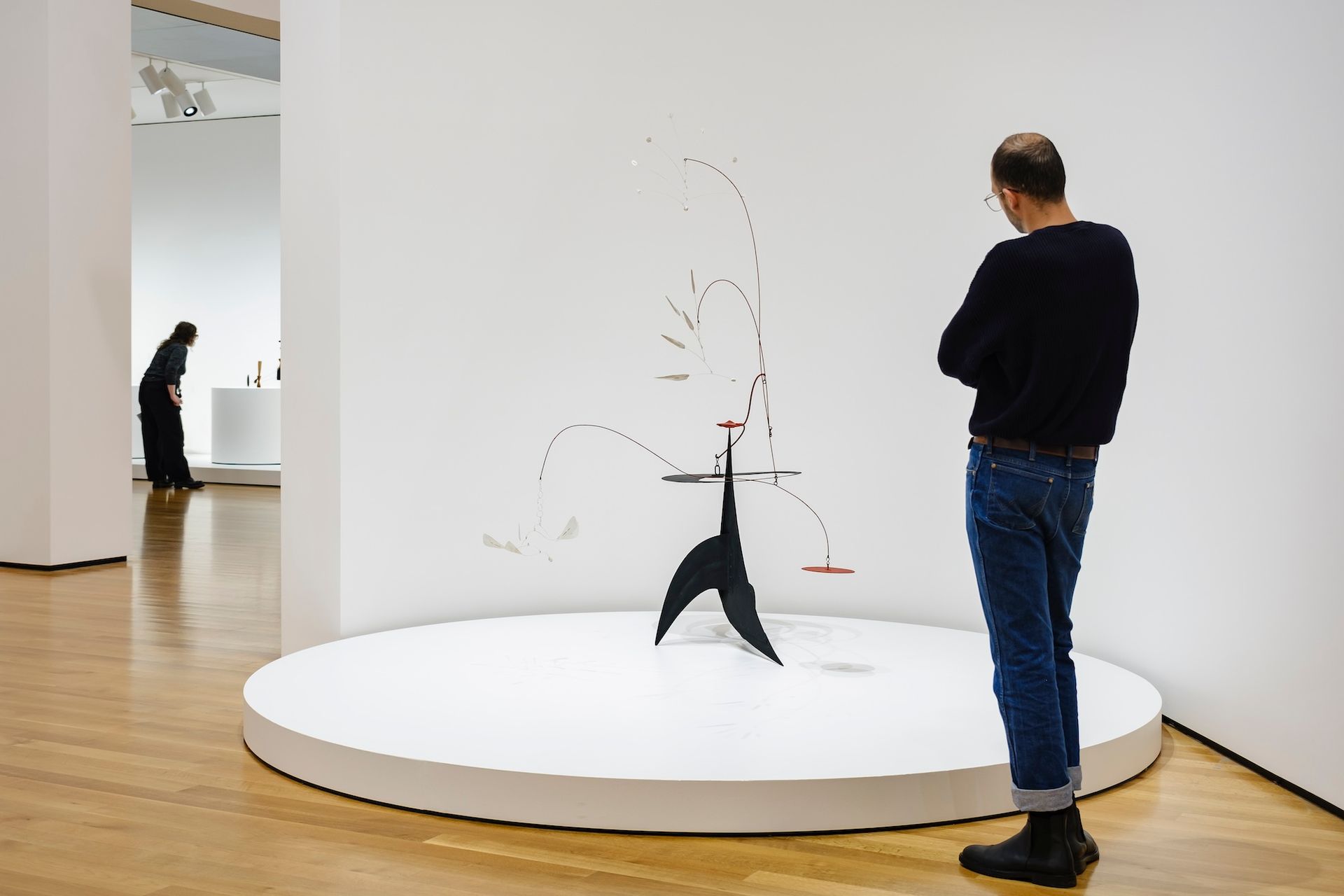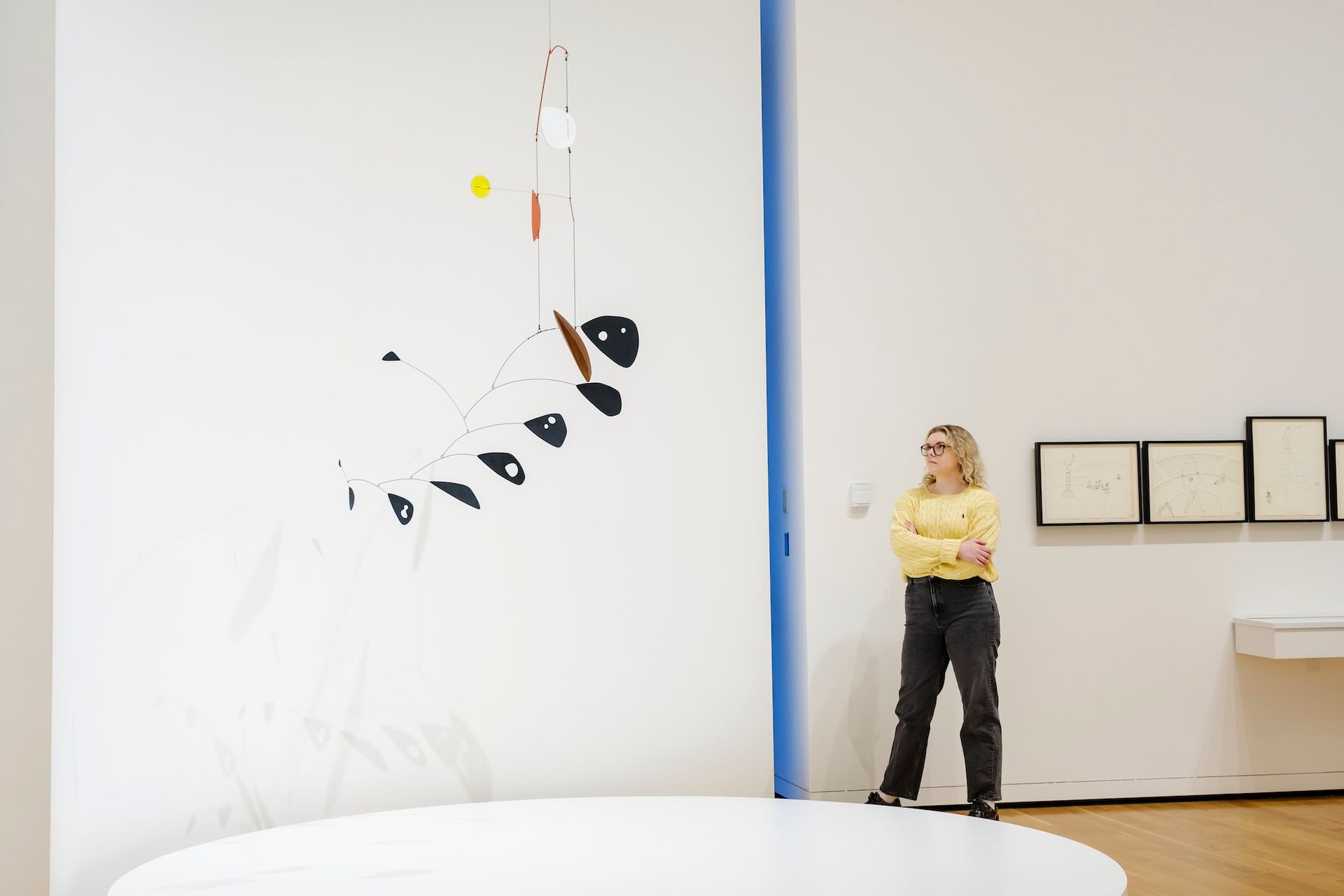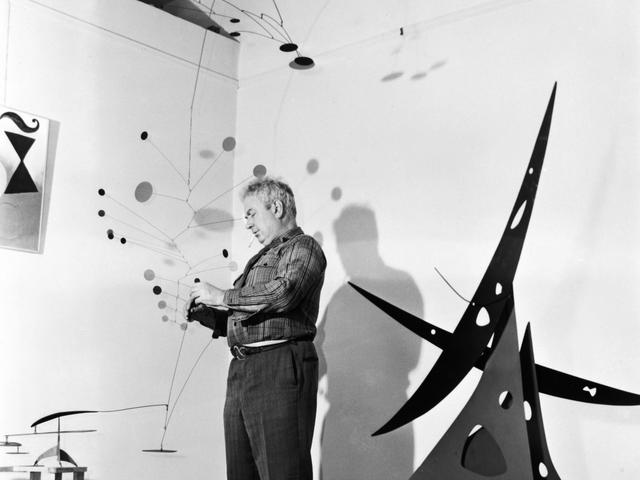Alexander Calder (1898-1976) may be best known for his slowly rotating mobiles and dramatically monumental stabiles, but a new exhibition at the Seattle Art Museum makes the jump to frame his works as a delightfully subtle kind of performance.
Calder: In Motion, The Shirley Family Collection (until 20 October 2024) comprises more than 45 works and ephemera recently donated to the museum by former Microsoft president Jon Shirley and his wife, Kim. The works span Calder’s entire career, from the 1920s to the 70s, and include everything from two-inch-tall miniature standing mobiles to the 22-foot-tall Red Curly Tail (1970), bent-wire animals, a book of Aesop’s fables illustrated by Calder, some early circus sketches and even a rare oil painting from 1958. These are all displayed in a newly configured gallery that features individual “stages” for the larger works, vitrines for the smaller ones and “overlook” balcony views—all with an eye towards spotlighting their theatrical nature.

Installation view of Calder: In Motion, The Shirley Family Collection, Seattle Art Museum, 2023 Photo: Alborz Kamalizad, © 2023 Calder Foundation, New York / Artists Rights Society (ARS), New York
The exhibition’s curator, José Carlos Diaz, specifically laid out the works non-chronologically, with the giant next to the tiny, providing the curation itself with an element of drama. As visitors ascend the museum’s escalators, the first Calder pieces are bookends to the artist’s career—a wooden sculpture from 1929 (Femme assise, resembling a cross between a Matisse and a Picasso) and a 12-foot-tall maquette of Mountains made less than a year before the artist’s death (the resultant three-storey sculpture has graced the atrium of a US Senate office building in Washington, DC, since 1986).

Installation view of Calder: In Motion, The Shirley Family Collection, Seattle Art Museum, 2023 Photo: Alborz Kamalizad, © 2023 Calder Foundation, New York / Artists Rights Society (ARS), New York
The gallery then opens into a double-height space that introduces the viewing balconies looking onto the stages below, together with rounded walls and dividers to facilitate a sense of flow. The circular stages act as framing devices for mobiles and other sculptures (along with their more practical purpose of keeping viewers from getting too close), isolating individual works and presenting them as solo performers, their shadows slowly rotating on the curved walls behind them. One of the hanging performers, Fish (1942), is an unusual but beloved Calder work made during the Second World War, when metal was scarce, so the artist turned to wire, bits of glass and pottery shards.

Installation view of Calder: In Motion, The Shirley Family Collection, Seattle Art Museum, 2023 Photo: Alborz Kamalizad, © 2023 Calder Foundation, New York / Artists Rights Society (ARS), New York
Diaz’s exhibition text mentions that one of the larger mobiles—Untitled (Métaboles) (1969)—was created as part of a stage set for a ballet. Fittingly, the work is viewable from both the floor and the two overlooking balconies, from which the entire exhibition becomes like a stage. (Calder, an avid fan of dance and friend of the choreographer Martha Graham, often sought out collaborations with choreographers and musicians; he even staged “ballet without dancers”, in which his kinetic sculptures played the starring roles.) Diaz also highlights the importance of Cirque Calder (1926-31), which he calls “one of the earlier examples of performance art”, a delightful miniature circus complete with clowns, acrobats, animals and props that the artist activated in a touring performance. (Cirque Calder is not in Seattle but can be viewed at the Whitney Museum of American Art in New York as part of its permanent collection.)

Installation view of Calder: In Motion, The Shirley Family Collection, Seattle Art Museum, 2023 Photo: Alborz Kamalizad, © 2023 Calder Foundation, New York / Artists Rights Society (ARS), New York
Further into the show, Little Yellow Panel (around 1936) creates its own performance backdrop in the form of its titular painted square. Meanwhile, the mobile Dispersed Objects with Brass Gong (1948)—hanging, like many of the others, above a circular stage in a rounded corner of the gallery—introduces Calder’s sound-making work, although viewers may have to wait for a long while for the sculpture to rotate to just the right configuration while listening intently for its quiet metallic ding.
Museumgoers are by now used to looking at Calder’s works—and most other artists’ for that matter—in settings characterised by a monastic silence. The Seattle Art Museum, though, encourages visitors to scan a barcode on the gallery’s wall with their phones and listen (with headphones, of course) to some of Calder’s favourite tunes from his personal record collection. As the sounds of Cole Porter and Benny Goodman give way to Latin American dances and, finally, a John Cage composition created specifically for a 1950 short film on the sculptor’s work, the full effect of Calder’s performing sculptures comes into view—and earshot.
- Calder: In Motion, Seattle Art Museum, until 20 October 2024



